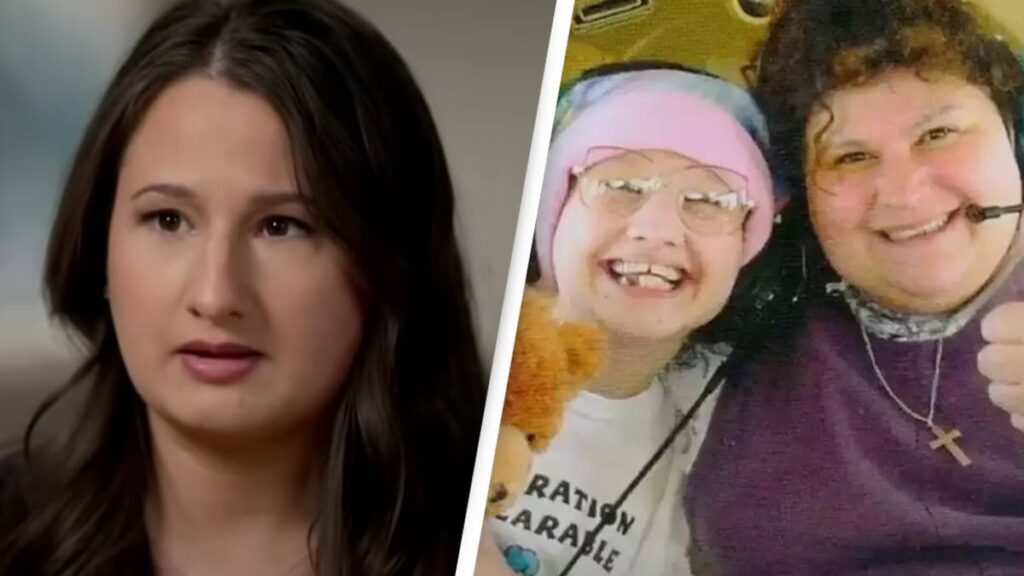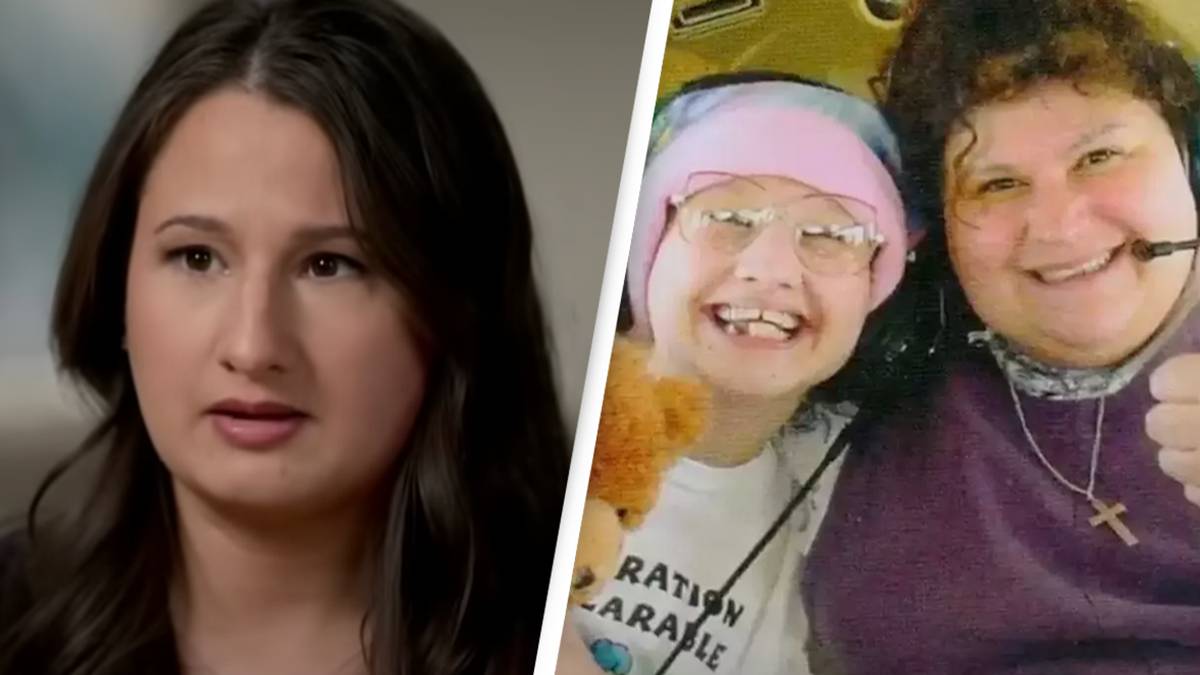
Gypsy Rose Crime Scene: Unveiling Truths & Expert Analysis
The Gypsy Rose Blanchard case captivated the nation, raising complex questions about Munchausen by proxy, abuse, and the blurred lines of justice. When Dee Dee Blanchard was found murdered in her home, the subsequent investigation revealed a web of deception and suffering that shocked the world. This article delves into the intricacies of the “gypsy rose crime scene,” exploring the events leading up to the tragedy, the evidence uncovered, and the legal ramifications. We aim to provide a comprehensive and authoritative analysis, drawing upon expert insights and factual reporting to offer a nuanced understanding of this complex case. What exactly was found at the “gypsy rose crime scene”? What did investigators uncover? What are the lasting implications of this case? This article answers these questions and more.
Understanding the “Gypsy Rose Crime Scene”: A Deep Dive
The term “gypsy rose crime scene” refers to the residence where Dee Dee Blanchard was murdered and where Gypsy Rose Blanchard was living. It’s not just a physical location but a focal point for understanding the layers of deception and abuse that characterized the Blanchard family’s life. The crime scene investigation provided crucial evidence that ultimately led to the conviction of Nicholas Godejohn, Gypsy Rose’s boyfriend, for Dee Dee’s murder, and Gypsy Rose’s conviction for second-degree murder due to her role in planning the crime.
The Physical Scene: 1628 N. Volunteer Way, Springfield, Missouri
The Blanchard home, located at 1628 N. Volunteer Way in Springfield, Missouri, was a modest residence that belied the extraordinary circumstances within. The crime scene revealed a meticulously constructed facade of illness and disability surrounding Gypsy Rose. Evidence gathered included:
* **Dee Dee’s Body:** Dee Dee Blanchard was found deceased in her bedroom, the victim of multiple stab wounds. This was the most critical piece of evidence.
* **The Murder Weapon:** The knife used in the murder was a crucial piece of evidence linking Nicholas Godejohn to the crime. Its presence at the scene directly implicated him.
* **Medication Bottles:** Numerous prescription bottles were found, some filled and some empty, suggesting the extensive (and often unnecessary) medical treatments Gypsy Rose was subjected to.
* **Medical Equipment:** Wheelchairs, feeding tubes, and other medical equipment were present, further reinforcing the illusion of Gypsy Rose’s severe illnesses. The presence of this equipment was a stark reminder of the fabricated narrative Dee Dee had created.
* **Documentation:** Medical records, some of which were later revealed to be falsified, were discovered, providing insight into Dee Dee’s manipulation of the medical system.
Beyond the Physical: Unveiling the Truth
More important than the physical items was the *absence* of evidence supporting Dee Dee’s claims about Gypsy Rose’s health. The crime scene investigation, combined with subsequent investigations and expert analysis, revealed that Gypsy Rose was not as sick as Dee Dee had portrayed her to be. This revelation was key to understanding the motive behind the murder. The investigation revealed:
* **Gypsy Rose’s True Age and Abilities:** It was discovered that Gypsy Rose was significantly older than Dee Dee claimed and that she was capable of many physical activities Dee Dee had restricted.
* **Lack of Medical Evidence:** Medical professionals who examined Gypsy Rose after Dee Dee’s death found no evidence of the conditions Dee Dee had claimed she suffered from.
* **Social Media Activity:** Gypsy Rose’s online activity, including her communication with Nicholas Godejohn, provided valuable insights into her state of mind and her desire to escape her mother’s control.
The “gypsy rose crime scene” thus became a symbol of the deception and abuse that had been perpetrated for years. It wasn’t just a murder scene; it was a testament to the lengths Dee Dee Blanchard went to maintain control over her daughter.
The Role of Munchausen by Proxy
The Gypsy Rose case brought Munchausen by proxy (now known as Factitious Disorder Imposed on Another, or FDIA) into the public spotlight. FDIA is a mental disorder in which a caregiver fabricates or induces illness in another person, typically a child. Dee Dee Blanchard exhibited many of the classic signs of FDIA:
* **Fabricating Symptoms:** Dee Dee consistently misrepresented Gypsy Rose’s health conditions, claiming she suffered from leukemia, muscular dystrophy, and other serious illnesses.
* **Seeking Medical Attention:** Dee Dee took Gypsy Rose to numerous doctors, often seeking second and third opinions until she found someone who would support her claims.
* **Exaggerating Symptoms:** Dee Dee exaggerated Gypsy Rose’s symptoms to elicit sympathy and attention.
* **Interfering with Treatment:** Dee Dee sometimes interfered with legitimate medical treatments, further reinforcing the illusion of Gypsy Rose’s chronic illnesses.
The abuse Gypsy Rose suffered at the hands of Dee Dee had profound psychological and physical consequences. She was subjected to unnecessary medical procedures, restricted from social interaction, and deprived of a normal childhood. The constant manipulation and control led to a deep sense of isolation and desperation, ultimately contributing to her decision to plot Dee Dee’s murder. Leading experts in FDIA suggest that the long-term psychological damage inflicted by such abuse can be devastating.
The Legal Aftermath: Justice and Complications
The “gypsy rose crime scene” investigation led to the arrest and conviction of both Gypsy Rose Blanchard and Nicholas Godejohn. The legal proceedings were complex, raising questions about culpability, intent, and the mitigating circumstances of Gypsy Rose’s abuse.
Gypsy Rose Blanchard’s Plea and Sentence
Gypsy Rose pleaded guilty to second-degree murder and was sentenced to 10 years in prison. Her defense argued that she was a victim of severe abuse and that her actions were driven by a desperate desire to escape her mother’s control. The court acknowledged the mitigating circumstances but ultimately held her accountable for her role in the crime. Many legal experts argue that the sentence reflected a balanced consideration of the horrific abuse Gypsy Rose endured and the gravity of the crime.
Nicholas Godejohn’s Trial and Conviction
Nicholas Godejohn was found guilty of first-degree murder and sentenced to life in prison. His defense argued that he was manipulated by Gypsy Rose and that he acted out of love for her. However, the prosecution successfully argued that he was a willing participant in the murder and that he acted with premeditation. The evidence presented at trial painted a picture of Godejohn as a man with a troubled past who was easily influenced by Gypsy Rose.
Lasting Implications and Lessons Learned
The Gypsy Rose case has had a lasting impact on public awareness of Munchausen by proxy and the complex dynamics of abuse. It has also sparked important conversations about the legal system’s response to victims of abuse who commit crimes. The case serves as a reminder of the importance of:
* **Recognizing the Signs of FDIA:** Raising awareness of the signs and symptoms of FDIA can help identify and protect potential victims.
* **Supporting Victims of Abuse:** Providing resources and support to victims of abuse can help them escape their situations and rebuild their lives.
* **Addressing the Root Causes of Crime:** Understanding the underlying factors that contribute to crime, such as abuse and mental illness, can lead to more effective prevention and intervention strategies.
Gypsy Rose Crime Scene: A Cautionary Tale
The “gypsy rose crime scene” is more than just a location; it’s a symbol of the devastating consequences of abuse, deception, and the failure of systems to protect vulnerable individuals. The case continues to be studied and debated, offering valuable lessons about the complexities of human behavior and the importance of empathy, understanding, and justice. This tragic story underscores the need for vigilant protection of children and vulnerable adults from abuse and exploitation. Cases like this are rare, but the underlying dynamics of power, control, and deception are sadly more common than we might think.
Expert Q&A: Unpacking the Complexities of the Case
Here are some frequently asked questions about the Gypsy Rose Blanchard case, answered with expert insight:
1. **What were the key pieces of evidence found at the crime scene that pointed to Dee Dee’s manipulation?**
The presence of numerous medications Gypsy Rose seemingly didn’t need, coupled with falsified medical records, was crucial. The living conditions themselves, designed to maintain the illusion of disability, were also significant.
2. **How did the investigation uncover that Gypsy Rose was not as sick as Dee Dee claimed?**
Medical examinations after Dee Dee’s death revealed no evidence of the chronic illnesses Dee Dee had described. Inconsistencies in medical records and discrepancies in Dee Dee’s accounts raised further suspicion.
3. **What role did social media play in this case?**
Social media allowed Gypsy Rose to connect with Nicholas Godejohn and plan her escape. It also provided investigators with valuable insights into her state of mind and her desire for freedom.
4. **Why was Gypsy Rose charged with second-degree murder instead of a lesser charge?**
While the abuse she suffered was a mitigating factor, Gypsy Rose admitted to planning the murder and soliciting Godejohn to carry it out. This level of involvement led to the second-degree murder charge.
5. **How does the Gypsy Rose case raise awareness of Munchausen by proxy (FDIA)?**
The case brought FDIA into the public spotlight, educating people about the signs and symptoms of this form of abuse and the devastating impact it can have on victims.
6. **What are some of the long-term psychological effects of Munchausen by proxy on victims like Gypsy Rose?**
Victims of FDIA often suffer from anxiety, depression, PTSD, and difficulty trusting others. They may also struggle with their identity and sense of self.
7. **What resources are available for victims of abuse and FDIA?**
Organizations like the National Domestic Violence Hotline and the Childhelp USA offer resources and support for victims of abuse and FDIA.
8. **How can medical professionals better identify and prevent cases of FDIA?**
Medical professionals should be aware of the signs and symptoms of FDIA and be willing to question inconsistencies in a caregiver’s account. They should also prioritize the well-being of the child and report any suspected abuse.
9. **What are the ethical considerations for media coverage of cases like the Gypsy Rose case?**
Media coverage should be sensitive to the victims of abuse and avoid sensationalizing the story. It should also provide accurate and balanced information and avoid perpetuating harmful stereotypes.
10. **What lessons can be learned from the Gypsy Rose case to improve the legal system’s response to victims of abuse who commit crimes?**
The legal system should consider the mitigating circumstances of abuse when sentencing victims who commit crimes. It should also provide access to mental health services and support for victims during and after the legal proceedings.
Conclusion: Seeking Understanding and Justice
The “gypsy rose crime scene” represents a confluence of tragedy, abuse, and the desperate search for freedom. The case serves as a stark reminder of the devastating consequences of Munchausen by proxy and the importance of protecting vulnerable individuals. By understanding the complexities of this case, we can work towards preventing similar tragedies in the future and ensuring that victims of abuse receive the support and justice they deserve. Share your reflections on the Gypsy Rose Blanchard case in the comments below. Explore our comprehensive guide to child abuse prevention for further insights.

